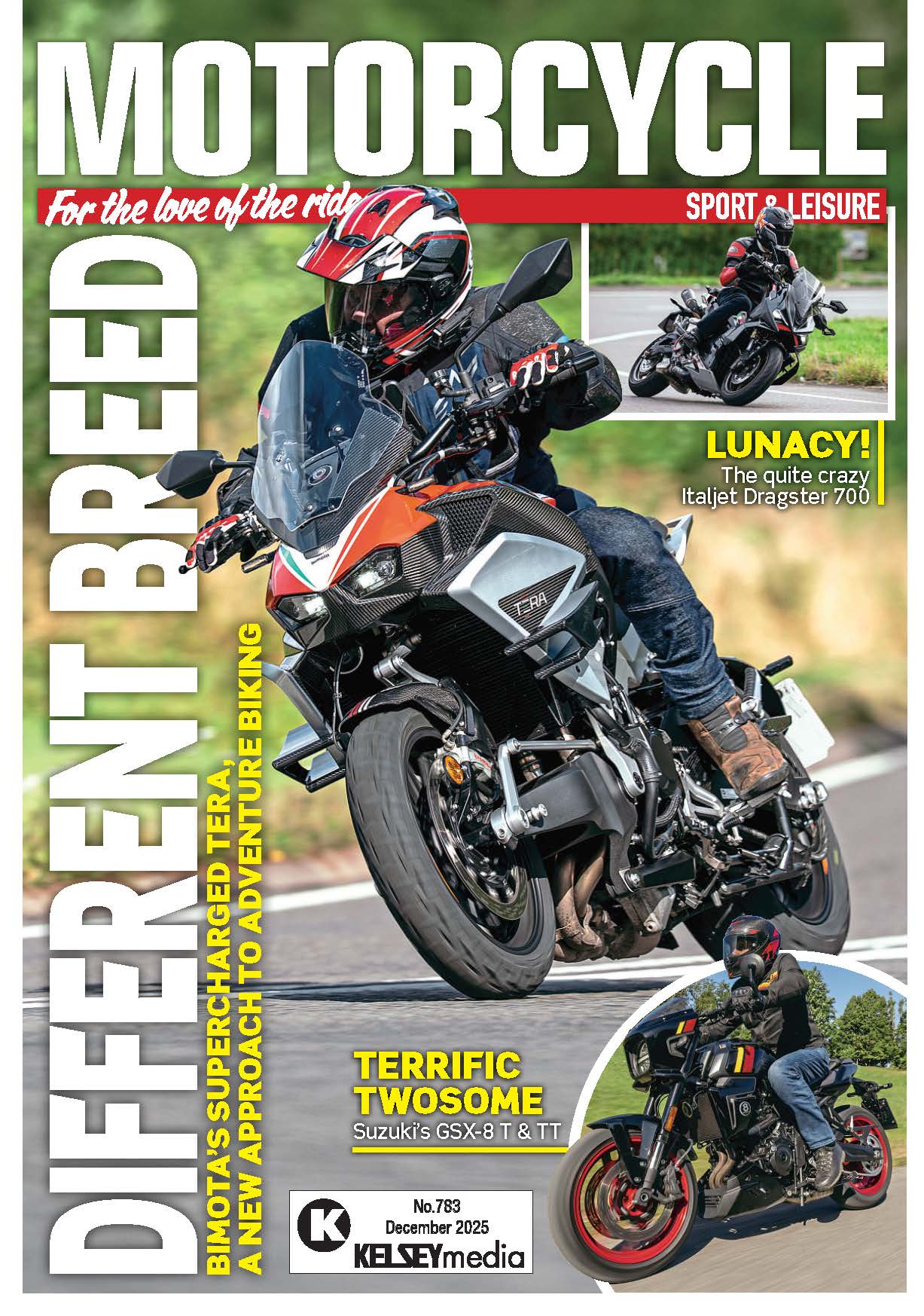If you want a bike that’ll go the distance but can also bring the fireworks when you want them, Kawasaki’s new Ninja 1100SX could be a perfect pick! Andy Bell elaborates…
I am by no means old, but despite my love for sports bikes, the thought of traveling head down for a long-distance ride on a sports-focused machine can have me looking for somewhere nice for a photo opportunity so I can hop off and stretch out any aches.
I am not yet ready to give up on these machines and do find myself covering more miles and planning trips further afield, so a sports tourer is a great compromise. Enter Kawasaki’s Ninja 1100SX. Now in its fifth year, the Ninja has proved to be an attractive option for like-minded individuals looking for a bike that can provide sports handling while having the practicability required for daily riding and also with a touring capacity.
Enjoy everything MSL by reading the monthly magazine, Subscribe here.
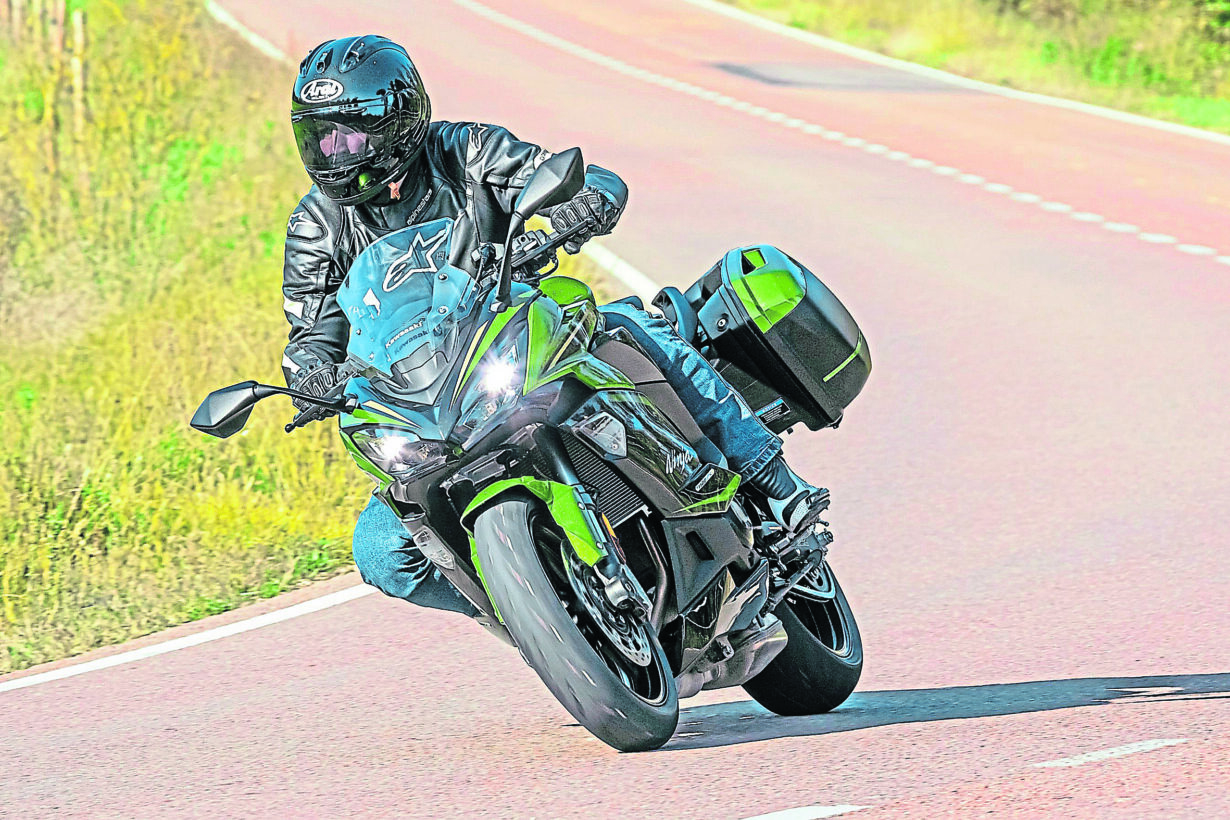
This popular sports tourer option could have probably been released again with just a graphics change for 2025 as the previous one was already a great package, so were there improvements to be had? Well, forget the old ‘If it isn’t broke’ saying. Kawasaki has carried out enough changes worthy to draw attention.
I had a full day of riding lined up with the Ninja in northern Spain and was keen to get going to see how it faired. The model I had for the test was the SE which, for an extra £1750, gives you premium features like the Őhlins S46 rear shock, Brembo brake calipers with Brembo master cylinder and braided lines, and heated grips. On a note here, Kawasaki expects the sales split to be 70/30 in favour of the SE over the standard.
If you have a keen eye, you may already have seen the 2025 model is now an 1100. This jump from 1043cc to 1099cc obviously demands the new name, but what does that mean in terms of power? Well, bear with the next part as the bhp has been lowered (yes, lowered!) from 140bhp to 136bhp. I have seen many negative comments regarding this, but I feel the need to step in on the defensive here.
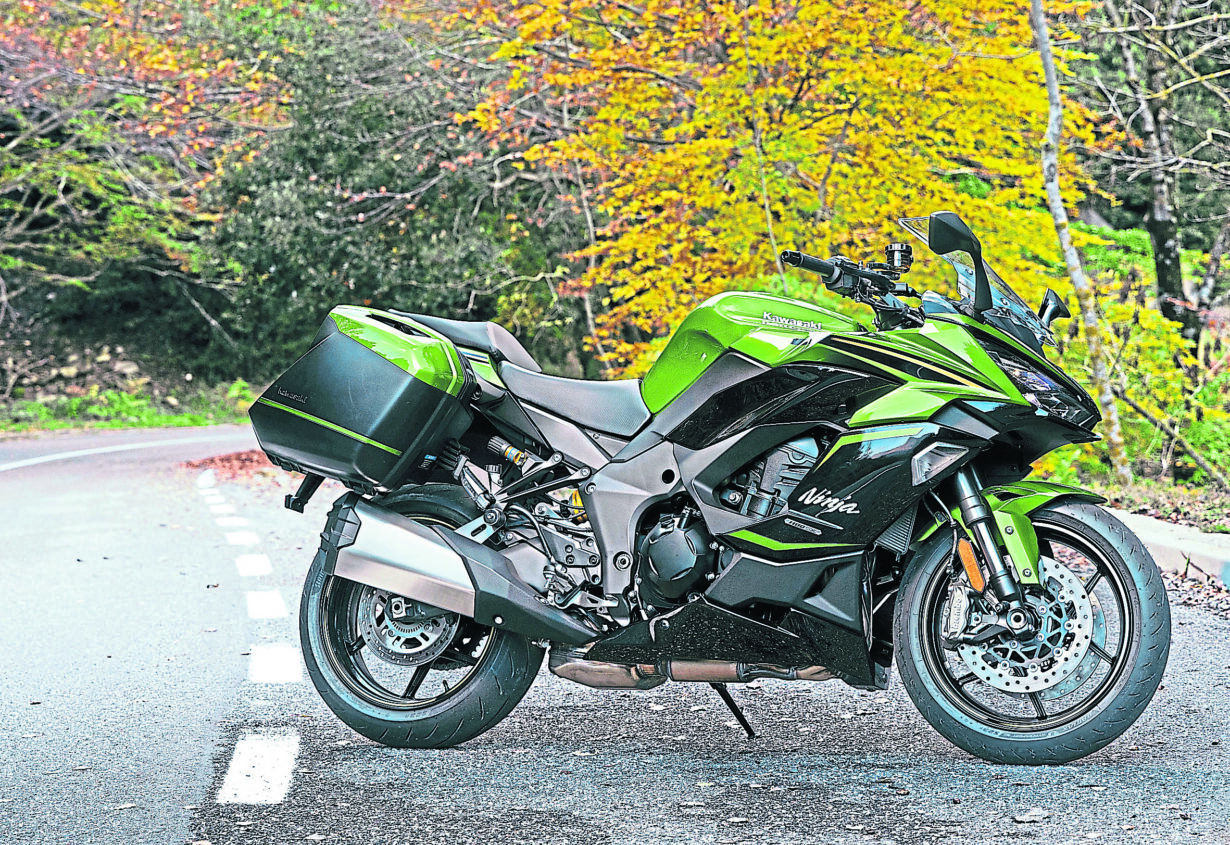
What you do get is more torque all the way from low through to mid-range which, if we are all honest, is where we would spend most of our time in the real world on one of these. You also get improved fuel economy (claimed 50mpg) with the combination of longer fifth and sixth gears, meaning the engine is not as high in the rev range for a given speed.
When first jumping on you do get that hint of a sports bike feeling but with a more relaxed riding position. I have tried a few other sports tourers recently and some are more biased towards the sporty side, meaning the bars are still that bit too low for me when considering longer rides. On the Ninja, however, the slightly higher bars already gave me a sense I could spend a full day riding while having the option to push on with more spirit if the opportunity arose.
The 4.3” TFT colour screen was a welcome sight – if you are a Kawasaki rider you may already have seen this and know how easy it is to navigate through the options as this is found on other models.
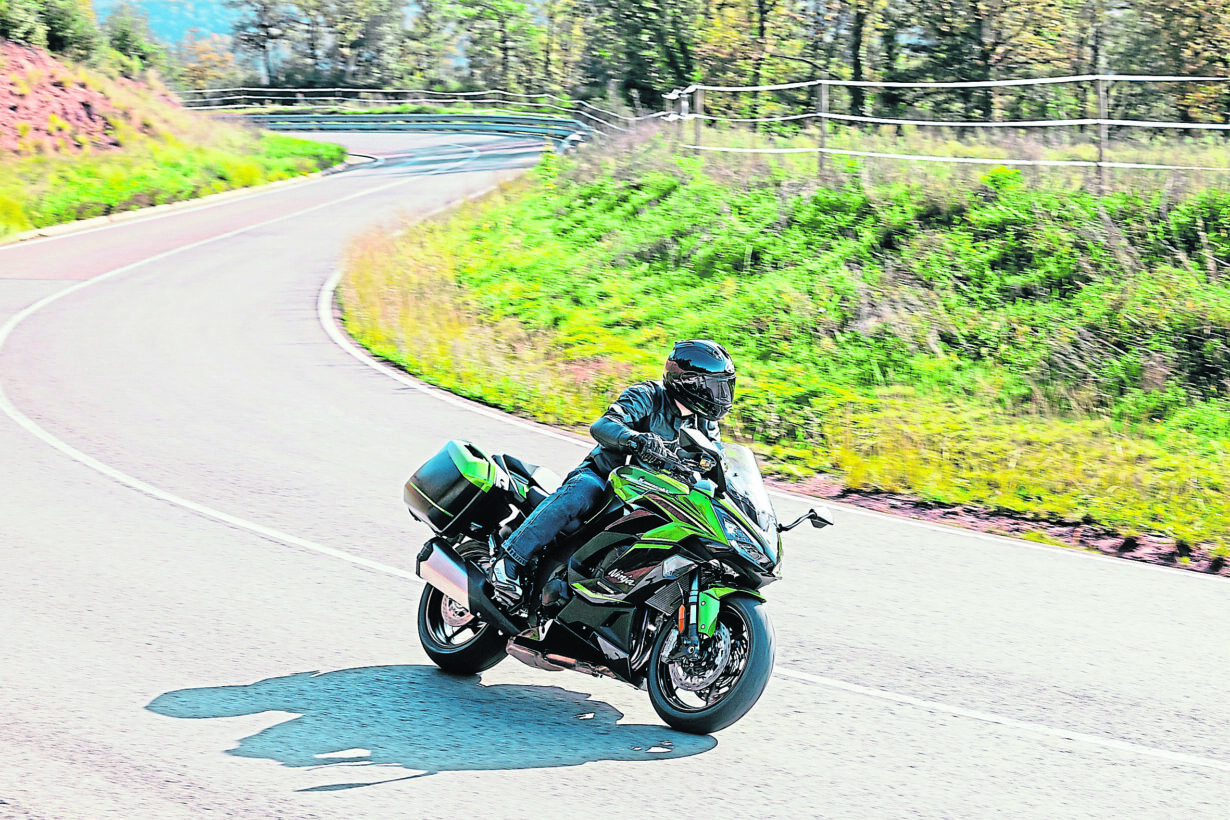
Despite the fact I was in Spain, the time of year for the test meant the mornings could be cooler so it was a good opportunity to make the most of what comforts the Ninja had to offer. Adjusting the screen to a more upright position of its four settings, while being easy enough at a standstill, isn’t something you could do while moving as it is a two-handed affair. On the go though, the higher screen setting did more than expected to deflect the air up and over, while also not creating too much extra noise like I have experienced with some others.
Another great bonus for the morning was the heated grips on the SE, which are an optional extra for the standard model. Activating them was just a push button next to the left grip which, for a few seconds, I wasn’t sure I had pressed correctly due to the flashing lights to start with, but it wasn’t long before the toasty feeling of confirmation was present, and these can get pretty hot when on the highest setting!
The four-into-two-into-one exhaust has a sporty and premium look, but also keeps the sound quite tame unless you are out in the open and taking full advantage of the extra torque through the gears. I suppose this would benefit the rider who wouldn’t want to offend the neighbours just before they go for a blast in the countryside. If, however, the neighbour likes to park outside your gate or lets the dog foul on the path by your front door, then maybe a different muffler is for you…
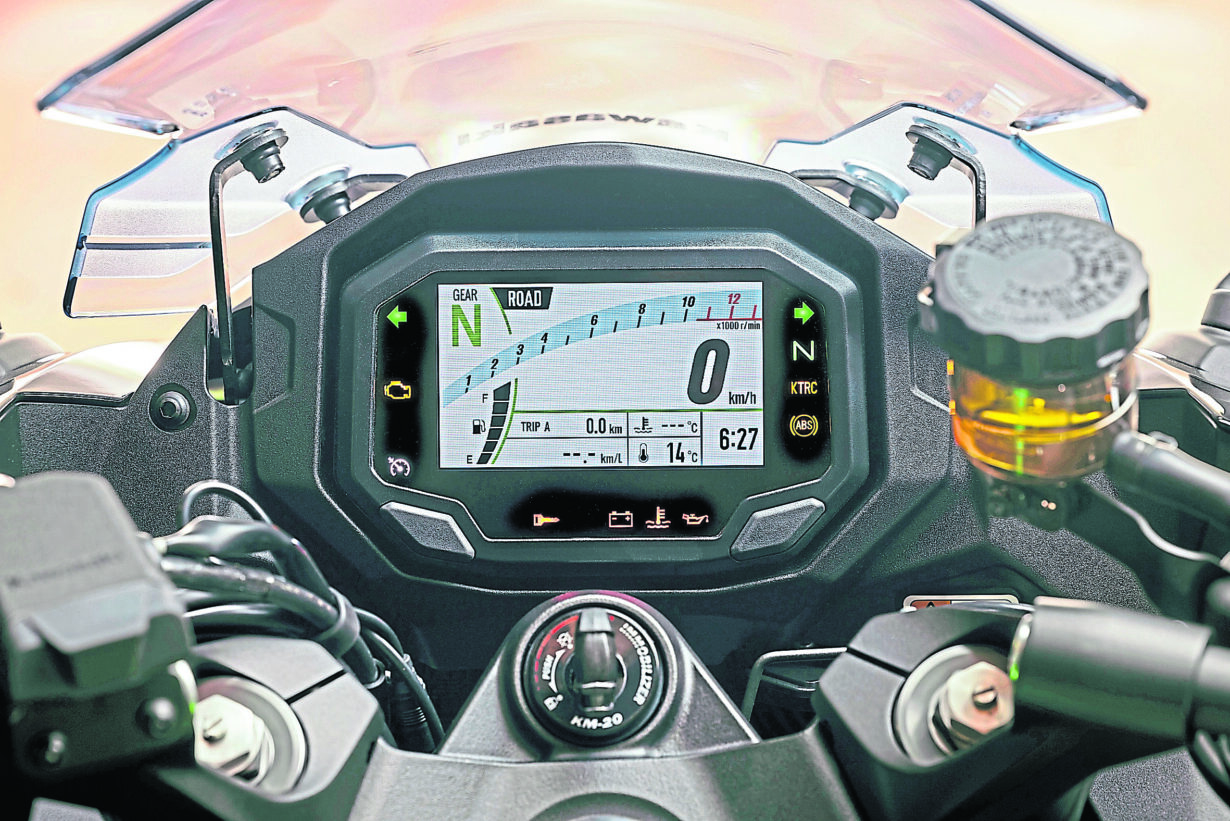
Out of the four rider modes (Sport, Road, Rain and Rider) most of the day was spent in Road as this still delivers full power with medium traction control. Each of the first three modes are activated simply by a ‘one button’ press while on a neutral throttle, while delving into the personalised Rider mode is done within the menu. This was a great setting for the riding I was getting up to and the traction control was activated a few times when pushing hard out of some damp hairpins under tree cover after a shower the day before. The traction control was by no means a harsh sensation, it felt quite smooth by just lowering the power and at times the flashing light on the dash was the only cue to it being in action.
I like in-line four engines, and this new 1100 did a good job of ticking the box for fun factor. The delivery of power when hard on the gas comes with the sense of urgency that I crave and the sound from the intake and exhaust also adds to the rush. For the most part, this was going well, but when cracking on the throttle coming out of the slower corners the delivery did feel a bit snatchy; nothing too dramatic but worth a mention.
This minor issue can soon be overshadowed by the amazing quickshifter used for both up and down shifts. The operating function for this has been lowered dramatically for the 2025 model from 2500rpm to a much lower 1500rpm and when combined with the slipper clutch the window for either lazy shifts while cruising around, or harder spirited downshifts, is greatly increased.
The SE model has an attractive Brembo combination up front with a pair of M4.32 monobloc calipers squeezing on to Brembo discs complemented with a Brembo master cylinder and steel-braided brake lines. Without riding the standard SX back-to-back with the SX SE, it could be argued that you may not feel a massive difference as the standard option is more than up to the job but for the bling factor alone I`ll take them. For all-day riding, the lever felt light to apply, yet didn’t remove any performance from the braking when you want to slow from high speed to make a tight turn, offering great feedback from first bite progressively all the way through the motion until letting go of the lever again.
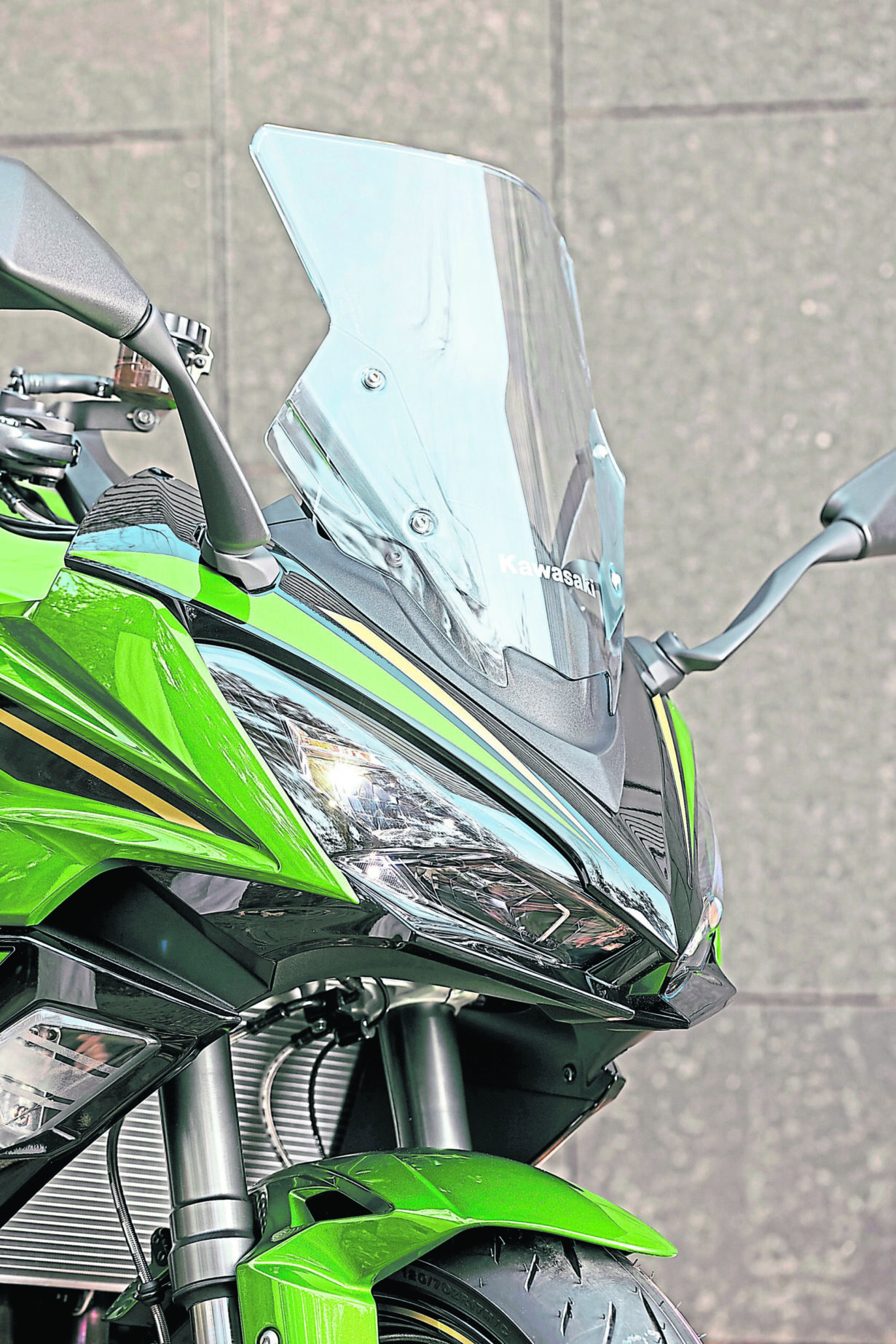
As mentioned earlier, the SE comes with an Őhlins S46 rear shock and, as well as building on the premium look and feel, it comes with the practicality of having adjustability for rebound and preload, with the latter being a remote unit in the usual golden colour and not requiring tools to adjust.
The suspension both front and rear were doing an amazing job as expected, soaking up the bumps and providing a smooth ride on longer stretches while also providing just about all the support needed when I came to some bends and wanted to push on through them. I say ‘Just about’, as I would have liked to have stiffened the set up a bit when accelerating hard out of some of the corners and, while I had the chance to do so and could have stopped to play around with the settings, I didn’t really want to stop as I was having a blast.
If riding with extra weight in the panniers or with a pillion, then this softness would be highlighted further, and I would feel the need to stiffen up the ride a little. It is a shame this still felt a little like a middle ground as the technology is there for electronic suspension, but then this would add to the cost – it would be nice to have as an optional extra maybe?
When it comes to comfort, this Ninja 1100 is ranking high when compared to other sports tourers, with Kawasaki getting the balance right for that sporty feel while offering a bike you could take on a long trip.
After some previous owners mentioned they felt too much vibration in the bars and pegs, the engineers listened and have added extra weight inside the bars and the end weights are also heavier to combat this. With the pegs, rubber-backed weights have been added behind the heel plates and also underneath the pegs themselves, and I never noticed any excess vibration so that area is ticked off.
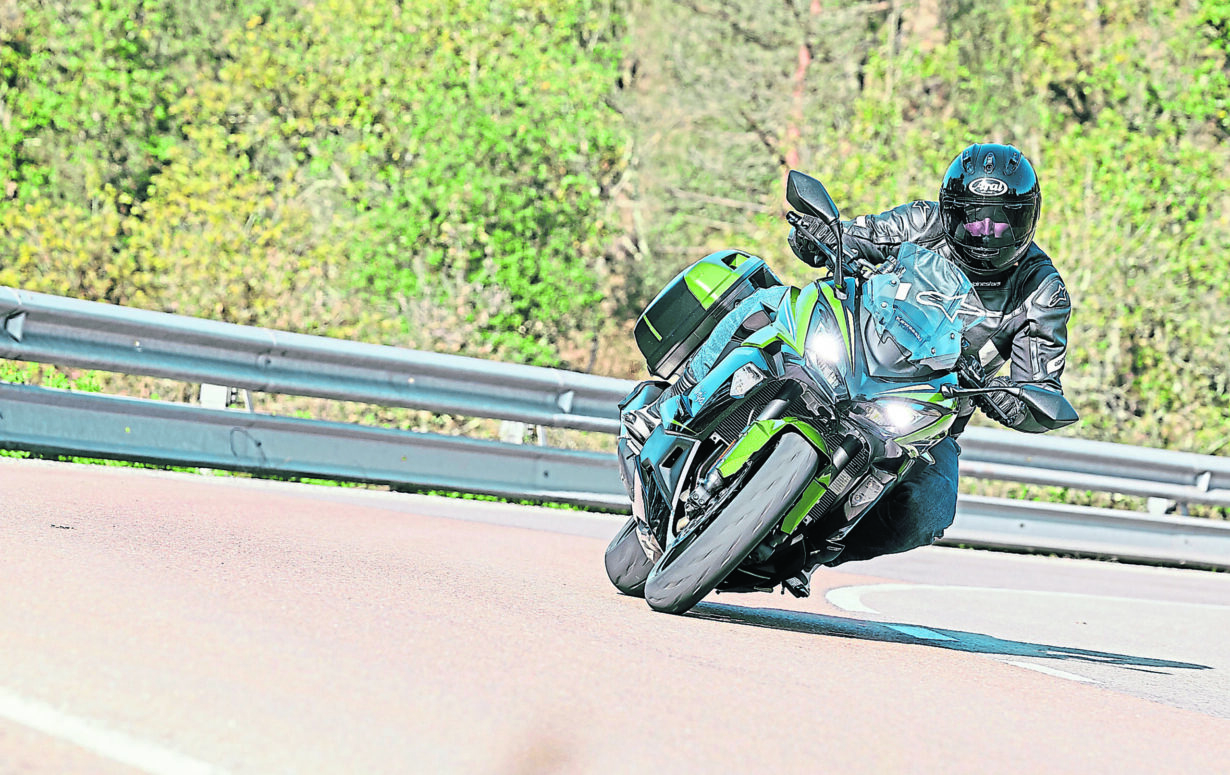
The rider’s seat is both wide and long, so you have extra room to move around if you feel the need, but one point I did find after the full day was the side edge of the seat being a little too aggressively angled. The pillion also benefits from a large seat, unlike the postage-stamp sized ones offered on a full-blown sportsbike, although they do sit much higher than the rider and would lean forwards more, potentially limiting comfort on longer trips.
The pair of 28-litre panniers are super-sturdy and were some of the easiest to operate over many of the ones I have used recently while not looking out of place, seamlessly integrating with the styling of the Ninja, and not looking like an afterthought.
Cruise control on this bike was a familiar set up for me after riding other Kawasakis – it is both intuitive and easy to use. A button to activate and another to either speed up or slow down on the left handlebar means you can spend time relaxing your right arm, but with the relaxed higher bars I never felt the need to.
The Ninja 1100SX SE was brilliant for me to spend a whole day with and would genuinely be an option if I was looking for a bike that could be an all-rounder for sporty rides and for getting away to get a few days’ riding in. Had I been asked to ride it back from the test in Spain then I would have packed my stuff into the panniers, filled the tank and be on my way without question, but one thing is for sure, I wouldn’t just be sticking to the motorways.
Boxout> Other things to know…
Őhlins rear suspension – An Őhlins S46 shock absorber at the rear not only provides a premier look, but also allows for ample adjustability for rebound and preload settings.
Quick Shifter – The dual-direction Kawasaki Quick Shifter (KQS) has a lower operating rev function from 2500rpm to 1500rpm to allow shifting up from slower speeds and also smoother downshifts when decelerating.
Engine – Based on the proven and well-liked 1000SX, the in-line 4 gets a capacity boost from 1043cc to 1099cc. Although there is a loss in overall bhp from 140bhp to 134bhp, the increase in torque is there from low to midrange, boosting its real-world usage.
Brakes – The SE has an attractive Brembo package with a pair of Brembo M4.32 calipers squeezing Brembo discs, complemented by a Brembo master cylinder and steel-braided lines.
Luggage – The 28-litre panniers are not only functional, but also integrate well with the Ninja. They are very sturdy and some of the easiest to operate and remove while also not looking like an afterthought.
Cruise control – The Ninja has a cruise control that is so intuitive to get to grips with, needing only a press of a button to activate, speed up or slow down.
Specification
Make and Model: Kawasaki Ninja 1100SX SE
Price: £12,249, SE model £13,999
Engine: 1099cc, liquid-cooled, inIine-four, DOHC, 16 valves, 77x59mm bore/stroke
Power: 136bhp (100.0kW) @ 9000rpm
Torque: 113Nm @ 7600rpm
Frame: Twin-tube, aluminium
Wheelbase: 1440mm
Rider aids: ABS, 4 rider modes, Quick Shifter, Traction Control, Cruise Control
Brakes: (F) Dual semi-floating 300mm Brembo discs with radial-mount opposed 4-piston Brembo M4.32 monobloc caliper. (R) 260mm single disc with Mono-piston caliper
Transmission: Six-speed, chain final drive
Suspension: (F) 41mm USD forks, adjustable preload and rebound damping. (R) Őhlins S46 shock, adjustable preload and rebound damping
Wheels/Tyres: (F) 120/70/17 (R) 190/50/17 Bridgestone Battlax Hypersport S23
Seat height: 835mm
Fuel capacity: 19 litres
MPG: 50.4mpg (claimed)
Weight: 235kg (kerb)
Warranty: 2 years
Contact: www.kawasaki.co.uk


